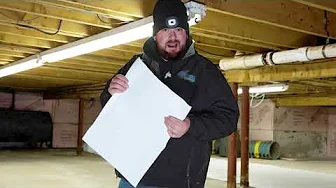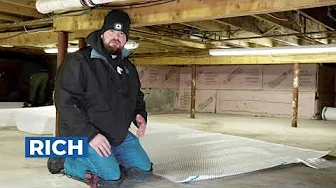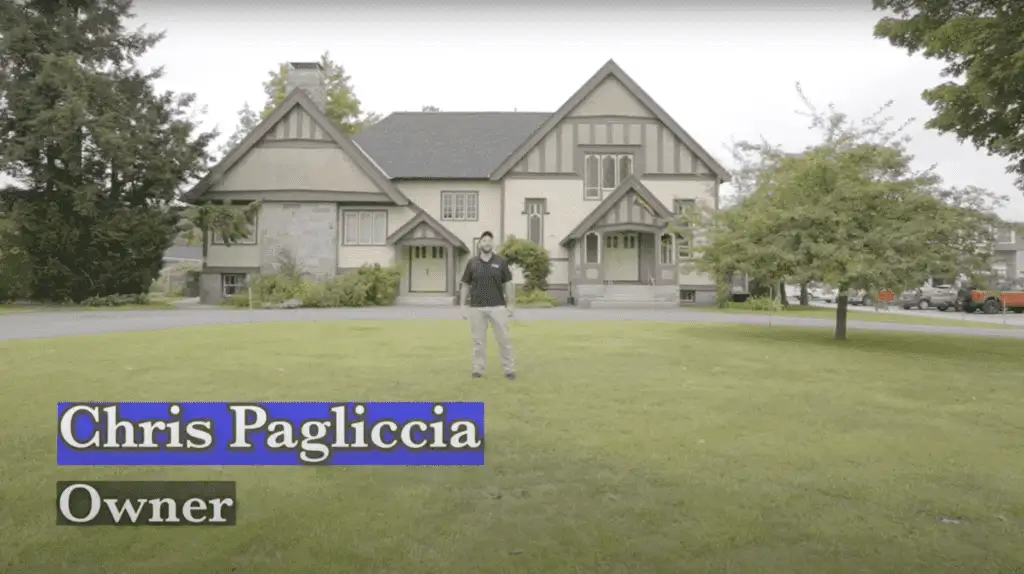Foundation Crack Repair Rye NH
Cracks in a foundation can cause big problems for homeowners. They weaken the structural integrity of your home and allow water, pests, and even air to enter your basement or crawl space. Left untreated, these cracks can grow, leading to more costly damage. For residents of Rye, NH, addressing foundation cracks promptly ensures safety and maintains property value.
Real People - Real Great Results
Crawl Space Video Playlist
Common Causes of Foundation Cracks
Foundation cracks don’t just appear out of nowhere—they’re the result of underlying stressors. Understanding what’s causing the problem is the first step to fixing it.
- Soil Movement: Your home sits on soil that’s constantly shifting, even if you don’t notice it. Clay soils expand when wet and shrink when dry, putting pressure on the foundation. Over time, this tug-of-war can lead to cracking.
- Water Damage: Poor drainage is the silent enemy of foundations. When water collects around your home after heavy rains, it seeps into the soil and increases hydrostatic pressure against the walls. Over time, the foundation buckles under the force and cracks form—small at first, then bigger as the problem persists.
- Temperature Shifts: Rye, NH is no stranger to freezing winters and thawing springs. Those temperature swings cause materials to expand and contract repeatedly. Your concrete foundation isn’t immune to this cycle, and the relentless movement creates weak points that crack open under stress.
- Poor Construction: Not all foundations are created equal. In homes where shortcuts were taken during construction—like using subpar concrete, not enough reinforcement, or rushing the curing process—cracks can appear much sooner than they should. Unfortunately, some homeowners inherit these flaws without knowing until the damage pulls back the curtain.
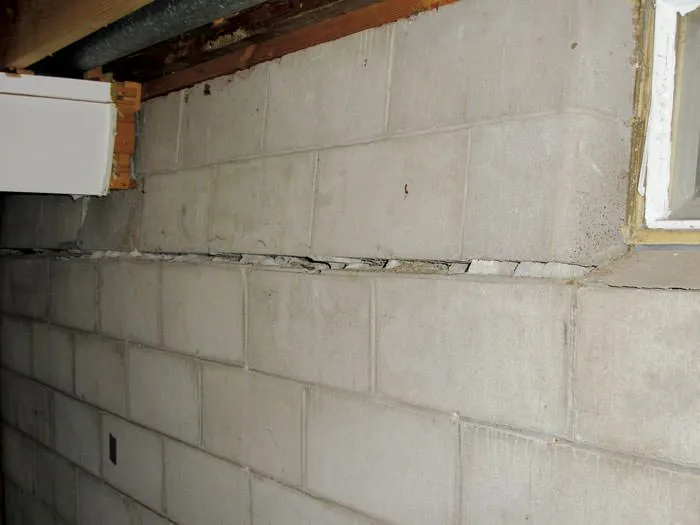
These culprits don’t work in isolation; they often team up. A poorly built foundation subjected to freeze-thaw cycles and poor drainage becomes a ticking time bomb. Knowing the cause is key to solving the issue properly, so you’re not just patching symptoms while the real problem goes untouched.
Types of Foundation Cracks
Foundation cracks come in different forms, each telling a part of your home’s story. Some are harmless whispers of settling earth, while others carry the weight of serious danger. Here’s what you need to know about the main types you might encounter:
- Vertical Cracks: Think of these as the “shrug” of foundation cracks. They’re often caused by the natural settling of your home’s structure. While typically less urgent, they’re not to be ignored. Sealing them promptly can prevent water and pests from sneaking in.
- Horizontal Cracks: Red flag alert. These cracks signal that external pressure—like expanding soil or poor drainage—is pressing hard against your foundation. They’re more than just cosmetic; they’re structural concerns that demand professional intervention, fast.
- Diagonal Cracks: These are the result of your foundation playing tug-of-war with uneven settling. One side drops while the other holds steady, and the result is a diagonal scar. Like vertical cracks, they vary in severity, but wider ones are worth a closer look.
- Step Cracks: Found in homes with block or brick foundations, these cracks mimic a staircase pattern along the mortar lines. Often caused by soil movement, they’re not just quirky—they’re clues that pressure or settlement is messing with your foundation.
Knowing what type of crack you’re dealing with is Step One in tackling foundation repair. Each type has its own story, but ignoring any of them could turn a simple fix into a costly headache.
Warning Signs of Foundation Damage
Not all foundation cracks are created equal, so knowing when to worry can save you a massive headache later. The first thing to monitor is the size and progression of any cracks in your foundation. Cracks wider than 1/4 inch should raise a red flag—they’re not just cosmetic and often point to underlying issues. If you notice new cracks appearing seemingly overnight or existing cracks growing rapidly, that’s an urgent sign your foundation may be shifting or under serious stress.
Water is another telltale culprit. If moisture is seeping through any cracks, it’s a clear sign the integrity of your foundation has been compromised. This can lead to everything from mold problems to more extensive structural damage, especially in areas like Rye, NH, where freeze-thaw cycles exacerbate water-related issues.
Pay attention to house behavior beyond the basement as well. Bowing or bulging walls near cracks, doors that suddenly stick, or windows that refuse to close properly often point directly to foundation movement. These quirks may seem like minor inconveniences, but they’re your house hinting something’s off at its core. The faster you respond, the less likely things are to spiral from manageable irritation to structural nightmare.
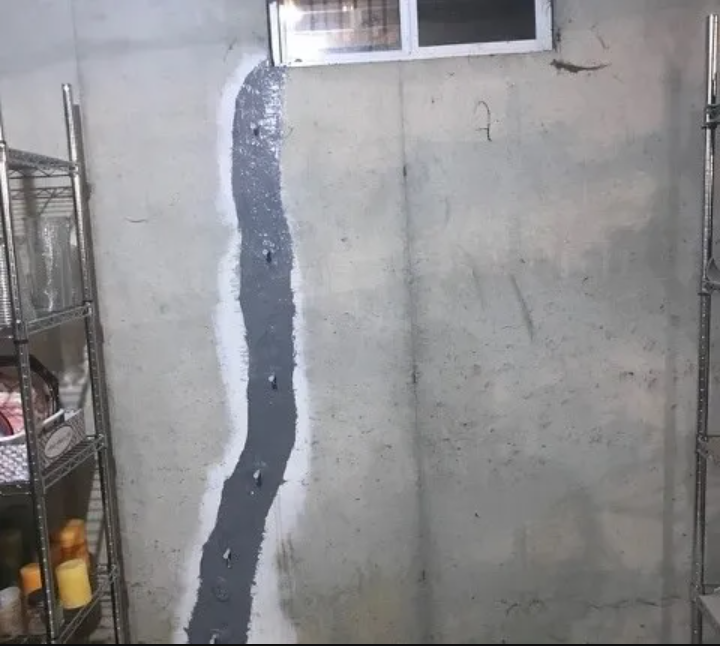
The key here is matching the solution to the scale of the problem. A well-reinforced foundation isn’t just for peace of mind—it’s about making sure you won’t have to deal with the same headache (and expense) down the line.
Steps To Address Foundation Crack Repair Rye NH
1. Identify the Root Cause
Foundation cracks don’t just appear out of nowhere; there’s always an underlying issue. To fix cracks properly, the first step is figuring out what’s causing them. This isn’t something you can do by eyeballing it—call in a professional. They’ll look beyond the surface, analyzing everything from how water drains around your home to how the soil behaves under your foundation. Maybe it’s as simple as compacted soil that shifted over time, or maybe it’s more complex, like poor construction or years of freeze-thaw cycles. Either way, it’s critical to tackle the root cause first. Otherwise, whatever repair you make is just a Band-Aid waiting to fail.
2. Seal the Crack
Once the underlying problem is addressed, the cracks themselves need to be dealt with. For smaller, hairline cracks, quick-sealing solutions like epoxy or polyurethane work well. These materials do double duty: they stop pesky leaks and keep out moisture that could turn a crack into a larger problem. On the other hand, simply sealing up larger cracks without reinforcing the structure is like using duct tape on a leaky dam. That’s where more robust measures come in.
3. Structural Reinforcement
Bigger problems demand bigger solutions. If the cracks are wide, horizontal, or hinting at structural instability, patching isn’t enough. Professionals might suggest carbon fiber straps, which work like braces to hold walls steady. For heavier lifting, steel beams can provide extra muscle where your foundation is under the most pressure—literally. And if the issue stems from unsupported sinking or shifting, helical piers could be the answer. These slender, screw-like anchors drill into deeper, stabler soil, restoring balance to your home’s foundations.
The Importance of Timeliness
Time is the silent enemy of foundation cracks. What starts as a hairline fracture can evolve into a gaping problem, driven by freeze-thaw cycles, shifting soil, or persistent moisture. The longer you wait, the more the crack spreads, and with it comes a cascade of complications: increased structural instability, accelerated water intrusion, and potentially staggering repair costs. In Rye, NH, where seasons bring fluctuating temperatures and consistent coastal humidity, delaying repairs is a gamble few homeowners can afford. A minor crack in fall could let in enough moisture to freeze and expand over winter, widening the damage by spring.
This isn’t just a cosmetic issue; each season compounds the stress on your foundation, risking bowed walls, uneven floors, and safety hazards for your family. Timely action doesn’t just mean addressing the visible crack; it means cutting off the chain reaction before it escalates. Whether it’s a quick seal for a smaller fissure or a more substantial reinforcement for structural issues, repairs completed now will always cost less than repairs postponed for later.
How To Choose a Professional for Foundation Repairs
When it comes to foundation repair, picking the right contractor can mean the difference between a lasting fix and a recurring headache. Don’t treat it like any run-of-the-mill home improvement project — take time to vet your options carefully. Here’s how to navigate the decision-making process with clarity and confidence.
Factors To Consider
- Licensed and Insured Contractors: It’s not just about the paper trail; licensing and insurance are non-negotiables. A licensed contractor ensures they’re meeting state and local standards, while insurance protects both you and your property if something goes sideways during the repair process. A handshake agreement isn’t going to cut it when cracks or corners get skipped.
- Local Experience: Rye, NH is no stranger to freeze-thaw cycles and the specific quirks of New England soil. A contractor familiar with the area’s challenges will understand not only how to fix your foundation but also how to address the underlying soil and drainage issues that caused the cracks in the first place. Local know-how minimizes surprises that could balloon your project’s timeline or cost.
- Detailed Estimates, No Guesswork: A good contractor is upfront about what the repair process will entail. Look for detailed, itemized estimates that break down labor, materials, and timelines. Beware of vague quotes — “ballpark” numbers often lead to “sky’s the limit” bills. Transparency upfront signals you won’t be left chasing them for answers later.
- Solid Reputation: Word of mouth still matters. Browse online reviews and testimonials for trends in customer satisfaction — consistency is key. Also, don’t hesitate to ask for references and actually follow up with them. If a contractor balks at providing references, that’s your cue to move on.
Questions To Ask
The interview stage isn’t just for them to size up your property. It’s your opportunity to gauge their professionalism, knowledge, and trustworthiness. Arm yourself with the right questions:
What’s Your Process for Diagnosing the Issue?
If a contractor skips straight to pitching a solution without discussing the problem in depth, they might be prioritizing speed over quality. Get someone who knows that a band-aid fix won’t hold up against New England’s unpredictable weather.
Do You Offer a Guarantee on Workmanship?
A reputable contractor stands by their work. Ask about warranties or guarantees, including what they cover and for how long. If they seem cagey, take it as a warning sign.
How Long Will Repairs Take?
Foundation repair isn’t something you want to rush, but you also don’t want a job dragging on due to poor planning. Get a realistic, upfront timeline and understand what factors might extend it. Bonus points if they can already anticipate setbacks specific to Rye’s seasonal conditions.
In short, don’t settle for anything less than a professional who meets high standards. The stakes are too high — your home’s structural integrity depends on it. Whether you’re dealing with a minor vertical crack or a serious horizontal one, the right expert will tackle both the problem and its cause head-on, ensuring that your foundation stays solid for the long haul.
Preventing Future Foundation Cracks
Fixing foundation cracks is one thing; keeping them from coming back is another. Taking proactive steps to protect your foundation now can save you from future headaches and repair bills down the road.
- Improve Drainage: Water is your foundation’s worst enemy. Make sure your yard slopes away from your home, so rainwater and melting snow don’t pool near the foundation. Extensions on downspouts can carry runoff even farther, adding an extra layer of protection.
- Maintain Consistent Moisture Levels: New Hampshire’s soil isn’t shy about expanding and contracting with weather changes. During dry spells, this can lead to soil shrinkage and foundation stress. Using soaker hoses around your home’s perimeter during droughts can prevent the ground from pulling away and leaving your foundation vulnerable.
- Inspect Regularly: Don’t wait for a major crack to ruin your day (or your budget). Make a habit of walking around your home every few months to spot early signs of trouble – small cracks, water pooling, or uneven soil. Catching an issue early means smaller, cheaper fixes.
- Invest in Gutter Maintenance: Gutters may seem like an afterthought, but clogged or broken gutters are practically an invitation for rain to seep into your foundation. Cleaning them out once a season and ensuring they’re properly attached can go a long way in keeping water where it belongs—away from your house.

By staying ahead of potential problems, you’re not just protecting your foundation—you’re preserving your home and saving yourself from future stress. Prevention is boring, sure, but boring beats pricey and stressful every time.
Conclusion
Foundation cracks may seem like a small nuisance, but ignoring them is a gamble that no homeowner should take. In Rye, NH, where fluctuating temperatures and shifting soil are the norm, being proactive is non-negotiable. A crack is never “just a crack”—it’s the beginning of what could evolve into structural instability, water intrusion, or even compromised safety. Tackle the issue head-on: identify the root cause, invest in proper repairs, and don’t cut corners when it comes to selecting a qualified contractor.
Repairs done right the first time mean less worry down the road. Pair this with preventative maintenance—like improving drainage and monitoring your foundation—and you’ve got a solid game plan to keep your home standing strong. When it comes to your home, cracks are a signal, not a cosmetic flaw. Pay attention, act swiftly, and you’ll thank yourself later. After all, a sturdy foundation is the bedrock of not just your house, but your peace of mind.
Reviews from Happy Customers
Our top priority is customer satisfaction, and we work closely with clients to understand their unique needs and goals.




